Avian Influenza Overview and Outbreak History in South Africa
Avian Influenza, specifically Highly Pathogenic Avian Influenza (HPAI) outbreaks in South Africa, have been documented since 2004, affecting primarily ostriches and poultry. Wild bird transmission remains a concern, with risk factors such as rainfall, temperature, wetlands, and poultry movements contributing to the spread. The introduction of strict biosecurity measures is crucial to prevent HPAI spill-over into domestic poultry. The history of outbreaks reveals the presence of both HPAI and Low Pathogenic Avian Influenza (LPAI) strains in different provinces over the years.
Download Presentation

Please find below an Image/Link to download the presentation.
The content on the website is provided AS IS for your information and personal use only. It may not be sold, licensed, or shared on other websites without obtaining consent from the author. Download presentation by click this link. If you encounter any issues during the download, it is possible that the publisher has removed the file from their server.
E N D
Presentation Transcript
Avian Influenza: overview and current status in South Africa Presentation to the Portfolio Committee on Agriculture, Land Reform and Rural Development 20 October 2023
Avian Influenza: overview and current status in South Africa 2023 10 11 2
Epidemiology Introduction by wild birds during summer months (Sept to March) especially by wild duck species and shorebirds such as terns Low prevalence in wild birds Takes time for virus to circulate, amplify and spill over into endemic birds o Introduced as a Low Pathogenic AI which turned HP after passaging in bird/poultry (H5N6 and H7Nx) o Introduced as a HPAI (H5N1) 4
Risk mapping Risk factors considered Rainfall Temperature Presence of wetlands Presence of irrigated crops and grasslands Chicken density Human density General Scientifically proven risks from wild bird transmissions remain low. the introduction of strict measures to ensure that wild and domestic birds do not come into contact on poultry farms is the most effective approach to ensure that HPAI does not spill- over into poultry. The primary factor increasing HP risk in Southern Africa is poultry movements of infected domestic poultry, together with poor biosecurity Risk mapping for avian influenza: a social-ecological problem Wild Bird Movements and Avian Influenza Risk Mapping in Southern Africa Graeme S. Cumming 1, Philip A. R. Hockey 1, Leo W. Bruinzeel 1, and Morne A. Du Plessis Ecology and Society 13(2): 26 http://www.ecologyandsociety.org/vol13/iss2/art26/ 5
History of HPAI in South Africa All AI is considered as controlled diseases in RSA. First Highly Pathogenic Avian Influenza (HPAI) outbreak in ostriches in the ECP in 2004 (H5N2). The first case of the HPAI outbreak was detected in a broiler breeder facility in the Mpumalanga province on 19 June 2017. 6
Summary of outbreaks after 2004 Disease SubType Event Start Date Province Species HPAI H5N2 2004/08/01 ECP, WCP ostriches HPAI H5N2 2006/06/19 WCP, ECP ostriches HPAI H5N2 2011/02/01 WCP ostriches LPAI H5N2 2011/12/19 WCP, ECP ostriches LPAI H5N2 2012/06/01 WCP ostriches LPAI H7N7 2014/01/31 WCP ostriches LPAI H5N2 2014/05/14 WCP. ECP ostriches LPAI H7N2 2016/07/10 WCP, FS WCP, ECP, NCP, FS, NWP, GAU, MPU, KZN ostriches HPAI H5N8 2017/06/19 Chickens and ostriches HPAI H5N8 2017/06/30 WCP, ECP, GAU, NCP, MPU Non-poultry LPAI H7 2020/07/15 WCP ostriches LPAI H5N2 2020/08/27 WCP Ostriches HPAI H5N1 2021/03/04 WCP, ECP, GAU, KZN, FS Chickens and ostriches HPAI H5N1 2021/05/13 WCP, ECP, GAU, FS, KZN, LIM Non-poultry HPAI H5N2 2022/10/25 KZN Chickens and ostriches HPAI H5 2023/03/08 WCP, GAU, KZN, MP Non-poultry HPAI H5 2023/04/18 WCP Chickens HPAI H7 2023/05/29 MPU, GAU Chickens
Information on recent outbreaks H5N1 (detected in 2021) HP Clade 2.3.4.4 (outbreak closed 2023). Introduced as Highly Pathogenic virus.
Recent outbreaks - 2023 H5 (detected in 2023) HP. Clade 2.3.4.4 to be determined if related to previous outbreak but initial information points to a different virus. N type possibly N1. Full genome sequencing underway.
H5 figures up to 02 October Province Reported outbreaks Number of outbreaks to be reported (awaiting reporting or information) Total number of outbreaks (reported plus to be reported) KwaZulu-Natal 3 2 (assuming these are commercial) 5 Mpumalanga 0 1 1 Western Cape 7 0 (1 outbreak in ostriches) 7 TOTAL 10 3 13
Current H7 outbreak HP H7 (most recently detected in 2023) First HP H7 and first outbreak of H7 in chickens. The N type is N6 H7N6. Introduced as Low Pathogenic virus and turned Highly Pathogenic in chickens. There are indications of mechanical spread between farms possibly by trucks , people and equipment. A single wild bird positive was detected.
HPAI H7N6 cases as of 17/10/23 Province Reported outbreaks Number of outbreaks to be reported (awaiting reporting or information) Total number of outbreaks (reported plus to be reported) Mpumalanga 11 0 11 Gauteng Limpopo Northwest Free State KwaZulu-Natal 69 5 8 1 1 0 0 0 0 0 69 5 8 1 1 WC 1 0 1 TOTAL 96 0 96 15
THE CHICKEN INDUSTRY COUNTRYWIDE The information was extracted from a SAPA report of September 2021. BROILER INDUSTRY GGP and grandparent farms 20 Parent rearing farms Broiler breeder farms 154 Broiler rearing farms TOTAL EGG INDUSTRY Grandparent farms Parent rearing farms Layer breeder farms Pullet rearing farms Layer farms (egg producing) 8 507 689 2 3 38 33 162 TOTAL BROILER AND EGG INDUSTRIES 238 927
Number of outbreaks in relation to the total number of commercial poultry farms Province Total number of H7 and H5 outbreaks % of farms in the country affected Mpumalanga 12 1.3 Gauteng Limpopo Northwest Free State KwaZulu-Natal 69 5 8 1 6 6.8 0.5 0.9 0.1 0.6 Western Cape 8 1 TOTAL 108 12 17
GENERAL CONCERNS AROUND HPAI Zoonotic aspect of AI o Pathogenicity o Human to human spread The list of mammals affected by AI is growing Deer Ferrets Cats (Poland) Financial effect on the chicken industry. Effect of food security. 18
GENERAL CONCERNS AROUND HPAI Avian influenza (AI) is a highly contagious viral disease Avian Influenzas can be classified into two categories: low pathogenicity avian influenza (LPAI) that typically causes little or no clinical signs; high pathogenicity avian influenza (HPAI) that can cause severe clinical signs and possible high mortality rates. These have a high potential of mutating to infect people. Migratory wild birds, especially waterfowls, are the natural host and reservoir of avian influenza viruses. Wild birds also play a major role in avian influenza viruses evolution and maintenance during low seasons. 19
GLOBAL CONSIDERATIONS AI has impacted commercial poultry production globally. With this new reality in mind, the International Alliance for Biological Standardization (IABS) met in Paris in October 2022 to open the way for more widespread use of HPAI vaccines. Currently, this include H5 and H7 strains. 20
GLOBAL CONSIDERATIONS FAO, World Organisation for Animal Health (WOAH) and Network of Expertise on Animal Influenza (OFLU) are reviewing the latest science and evidence of the disease to improve prevention and control and the role of vaccination. Vaccination strategy o Emergency vaccination in the face of an epidemic, o Preventive vaccination (i.e. prophylactic) carried out if a high risk of virus incursion is identified and early detection/ rapid response measures may not be sufficient o Routine vaccination performed in endemic areas. 21
IMPORTANT CONSIDERATIONS IF VACCINATION IS ALLOWED AS PART OF THE CONTROL STRATEGY Vaccination is considered but it is important to note that vaccination will not prevent disease but only decrease the severity of symptoms. Safety of vaccine is key. Vaccination can under no circumstances replace good biosecurity. Surveillance in vaccinated flocks will have to be increased considerably to detect introduction of field virus (cost of owner). No vaccinated live birds can be sold unless to a location with the same vaccinated status. Current SADC protocol is not to vaccinate discussions must take place if vaccination is considered. Serology DIVA test will have to be implemented and validated. 22
REQUEST TO BE EXEMPTED FROM CULLING OF INFECTED AND IN-CONTACT CHICKENS Various requests were received to obtain exception from culling (according to Table 2 of the Regulations of the ADA), as a relatively large number of infected chickens recover and start to produce again. This increases the risk of circulating virus in previously infected and in-contact flocks if not managed properly with increased risk to all susceptible species. These applications will only be considered if: o The farm is under quarantine. o Additional quarantine and biosecurity measures are in place to prevent spread of HPAI to other susceptible species including humans and other mammals. There must be strict biosecurity measures in place as described in VPN44/2012 -01 and verified by the local state veterinarian. No visitors on farm may have had contact with other poultry in 72 hours prior to visit. Appropriate personal protective equipment (PPE) must be supplied to all staff and visitors. Private and state veterinary oversight must be stepped up (proof of this in writing). o Disposal must be done in compliance with Guidelines for control measures (1 May 2021 o Eggs from these farms may only go for pasteurization. o Movement of hatching eggs may be considered subject to strict conditions. o Surviving chickens will remain under lifelong movement restrictions with increased surveillance no live chickens may be sold. 23
Request to be exempted from culling of infected and in-contact chickens Requirements continuing o There will be monitoring and testing to determine the end of the HPAI virus shedding from the surviving and in-contact chickens. Mortality figures Postmortems PCR testing according to flock size o Sentinels must be introduced if PCR tests in the flocks are negative. o If all requirements adhered to, the Director may give permission for spent hens to be sent for direct slaughter. o Empty farms must be cleaned and disinfected o Quarantine may be lifted if all the requirements are fulfilled. 24
Thank You 25




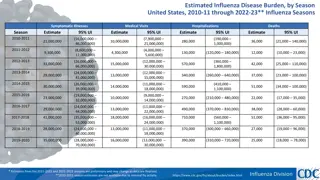
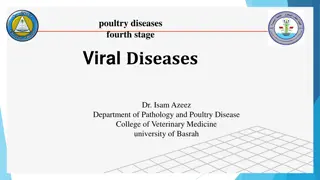
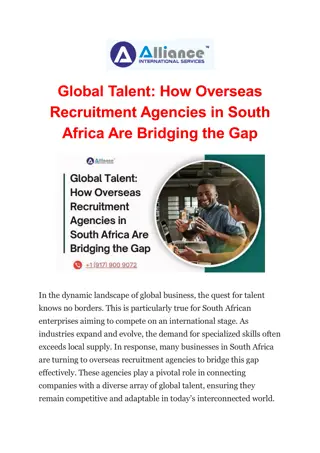
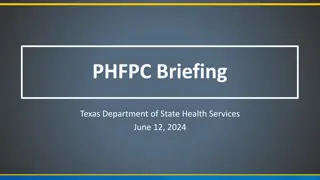
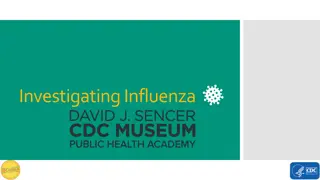
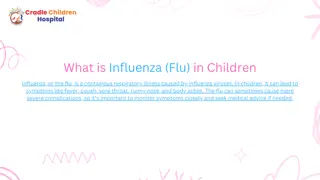
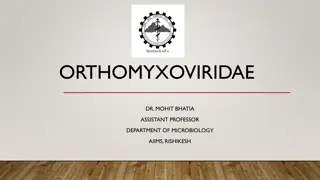
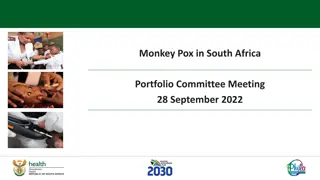
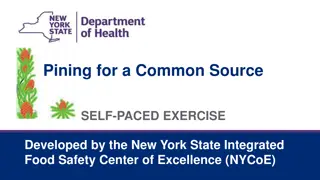
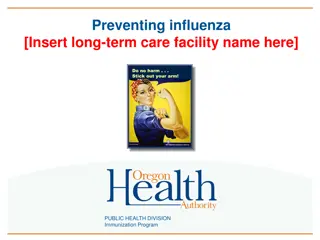
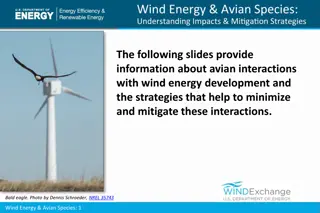


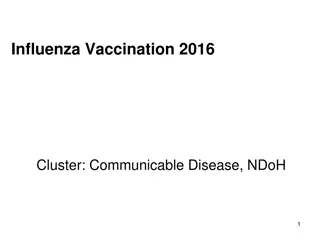
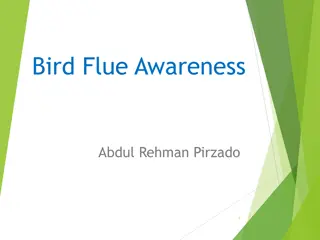
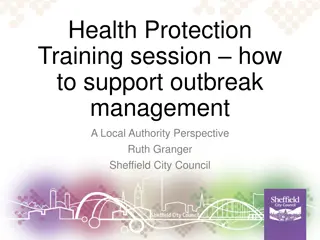

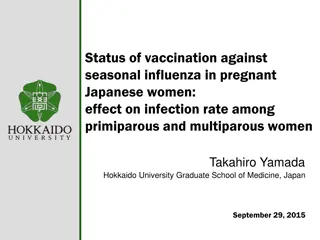
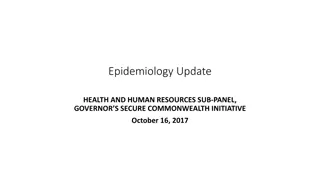
![Preventing Influenza at [Name of Critical Access Hospital]](/thumb/233818/preventing-influenza-at-name-of-critical-access-hospital.jpg)